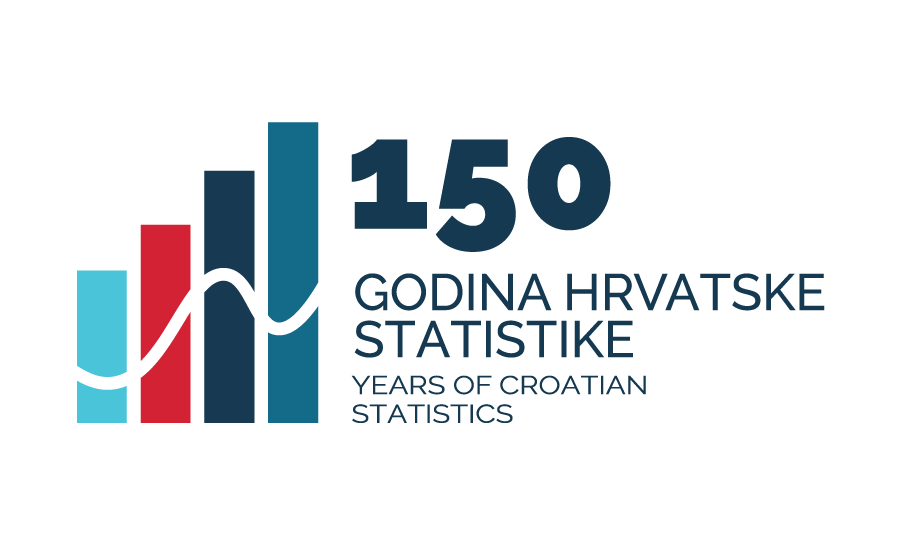First Release
PUBLIC SEWAGE SYSTEM, 2024
In 2024, the total volume of waste waters amounted to 368 096 thousand m3, which was an increase of 2.1% compared to 2023.
Out of the total volume of waste waters, 197 036 thousand m3 were from households and economic activities (increase of 3.7%), while 171 060 thousand m3 were other waste waters (precipitations, etc.).
The volume of waste waters discharged from households increased by 3.8% and from economic activities by 3.3%, as compared to the previous year.
In 2024, the volume of treated waste waters amounted to 308 303 thousand m3, which was 1.4% more than the total volume of treated waste waters in 2023.
The volume of untreated waste waters amounted to 59 793 thousand m3, which was 6.0% more than in the previous year.
The public sewage network in 2024 was 15 560 km long, which was 3.1% more than in 2023.
The total number of waste water treatment plants was 210 in 2024. The number of plants for all treatment methods increased, but the number of tertiary treatment plants increased the most, by 9.4%.
More detailed data will be available in the database on 18 July 2025.
1 SOURCE, TREATMENT AND DISCHARGE OF WASTE WATERS, 2023 AND 2024 |
||||||||||||||||||||||||||||||||||||||||
|
'000 m3
|
2 PUBLIC SEWAGE NETWORK AND WASTE WATER TREATMENT PLANTS, 2023 AND 2024 |
||||||||||||||||||||||||
|
G-1 WASTE WATERS, 2023 AND 2024
G-2 WASTE WATERS, BY ORIGIN, 2023 AND 2024
NOTES ON METHODOLOGY
Sources and methods of data collection
The data on the public sewage system are collected by using the annual statistical survey entitled the Annual Survey on Public Sewage System (VOD-2K form) on the basis of the Official Statistics Act (NN, Nos 25/20 and 155/23).
Reporting units are public suppliers of public sewage system services. According to the Water Act (NN, No. 47/23), the public supplier of sewage system services is a company in which all shares or equity shares are held by local self-government units or companies in which all shares or equity shares are held directly by local self-government units, that is, an institution founded by a local self-government unit.
The report is filled in by legal entities and parts thereof that are registered, according to the NKD 2007 (NN, Nos 58/07 and 72/07), in section E Water supply; sewerage, waste management and remediation activities, class 37.00 Sewerage.
Coverage and comparability
The source for the address list is the Statistical Business Register.
The survey provides basic data on waste waters, their treatment and discharge as well as on the public sewerage network and waste water treatment plants.
Definitions
Public sewerage means the activity of collection of waste waters, their transport to a waste water treatment plant, treatment and direct or indirect discharge into surface waters, treatment of sludge generated in the process of waste water treatment, if the above is conducted through public sewerage facilities, and management of these facilities; public sewerage also includes pumping and transport of waste water from sump pits.
Waste waters are all potentially polluted industrial, sanitary, rainwater and other waters.
Treated waste waters comprise all amounts of waste waters treated by using either primary (mechanical), secondary (biological) or tertiary (combined) treatment method.
The primary treatment includes the application of physical and/or chemical processes by which at least 50% of suspended solids are removed from the waste water, while the BOD5 value decreases by as much as 20%, as compared to the BOD5 value of influent waters.
The secondary treatment includes the application of biological and/or other treatment processes by which the concentration of suspended solids and BOD5 decreases by 70% to 90% and the concentration of COD by at least 75%.
The tertiary treatment includes the application of physical and chemical, biological and other treatment processes by which the concentration of nutritious matters of influent in waste waters decreases by as much as 80%, or other pollutants, which could not be removed to that extent in the secondary treatment, are now removed as well.
Discharged waste waters consist of discharges of treated and untreated waters. The waters can be discharged into ground waters, waterflows, reservoirs, lakes and the sea.
Public sewage network is a network of enclosed public drains and sewers used either for draining of both waste and atmospheric waters together (general water sewage system), or for separate draining of waste and atmospheric waters (separation water sewage system).
Total length of the public sewage network is the length of the sewerage network of enclosed public drains and pipes for wastewater and atmospheric waters from settlements, without connections and networks within buildings.
Waste water treatment plants are devices for the treatment of waste water. They are divided to devices for the primary, secondary and tertiary treatment.
| Abbreviations | |
| BOD5 | biochemical oxygen demand |
| COD | chemical oxygen demand |
| km | kilometre |
| m3 | cubic metre |
| NKD 2007 | National Classification of Activities, 2007 version |
| NN | Narodne novine, official gazette of the Republic of Croatia |
| '000 | thousand |
Published by the Croatian Bureau of Statistics, Zagreb, Ilica 3, P. O. B. 80
Phone: (+385 1) 48 06 111
Press corner: press@dzs.hr
Persons responsible:
Edita Omerzo, Director of Spatial Statistics Directorate
Lidija Brković, Director General
Prepared by:
Darko Jukić, Gordana Lepčević, Željka Kovaček Čuklić, Bernarda Šimunić and Jelena Žanko Milanković
USERS ARE KINDLY REQUESTED TO STATE THE SOURCE.
Customer Relations and Data Protection Department
Information and user requests
Phone: (+385 1) 48 06 138, 48 06 154, 48 06 115
E-mail: stat.info@dzs.hr
Subscription
Phone: (+385 1) 21 00 455
E-mail: prodaja@dzs.hr


